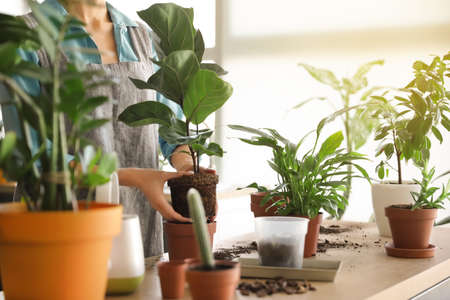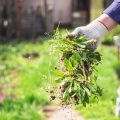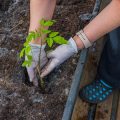1. Choosing the Right Leafy Greens and Vegetables for Indoor Growing
Growing vegetables indoors with grow lights is a great way to enjoy fresh produce year-round, especially if you live in an area with cold winters or limited outdoor space. But not all veggies are equally suited for indoor growing. To get the most out of your indoor garden, it’s important to choose leafy greens and compact vegetables that thrive in controlled environments and under artificial lighting.
Best Leafy Greens for Indoor Growing
Leafy greens are among the easiest and fastest-growing plants to grow indoors. They don’t require deep soil, they grow quickly, and they respond well to grow lights. Here are some top choices:
| Leafy Green | Growth Time (Days) | Light Needs | Flavor Profile |
|---|---|---|---|
| Lettuce (Romaine, Butterhead, Leaf) | 25–45 | Moderate to High | Mild, crisp |
| Spinach | 30–40 | Moderate | Savory, slightly earthy |
| Kale (Dwarf Varieties) | 50–65 | High | Bold, peppery |
| Arugula | 20–30 | Moderate to High | Peppery, tangy |
Compact Vegetables That Work Indoors
While leafy greens are the easiest, some compact vegetables also do well indoors if given proper lighting and care. Look for dwarf or container-friendly varieties that don’t need a lot of space.
| Vegetable | Recommended Variety | Growth Time (Days) |
|---|---|---|
| Radishes | Cherry Belle | 22–30 |
| Bush Beans | Bush Blue Lake | 50–60 |
| Dwarf Carrots | Little Finger | 55–70 |
Aromatic Herbs That Love Grow Lights
If youre short on space or just want to add some fresh flavor to your meals, herbs are a great addition to your indoor garden. Many herbs thrive under grow lights and can be harvested regularly for cooking.
| Herb | Light Requirement | Popular Uses |
|---|---|---|
| Basil | High (14–16 hrs/day) | Pasta dishes, pesto, salads |
| Cilantro (Coriander) | Moderate to High | Salsa, tacos, curries |
| Parsley | Moderate to High | Sauces, garnish, soups |
Tips for Selecting Plants for Indoor Gardens
- Dwarf or compact varieties: These take up less space and are easier to manage indoors.
- Fast growers: Crops like arugula and radishes mature quickly and offer quick rewards.
- No need for pollination: Leafy greens and many herbs don’t require pollination, making them perfect for indoor settings.
Selecting the right crops is the first step toward a successful indoor vegetable garden. In the next section, we’ll explore how to set up your lighting system so your plants get exactly what they need to grow strong and healthy.
2. Understanding Grow Light Options and Requirements
If youre growing leafy greens and vegetables indoors, using the right grow lights can make all the difference. Since your plants arent getting natural sunlight, artificial lighting becomes their main source of energy. Let’s break down the different types of grow lights and how much light your indoor garden really needs.
Types of Grow Lights
There are several kinds of grow lights available, but the three most common for home gardeners are LED, fluorescent, and full-spectrum lights. Each type has its pros and cons depending on your budget, space, and the plants youre growing.
| Grow Light Type | Pros | Cons |
|---|---|---|
| LED (Light Emitting Diode) | – Energy-efficient – Long lifespan – Low heat output – Available in full-spectrum options |
– Higher upfront cost |
| Fluorescent (CFL or T5) | – Affordable – Good for small spaces – Easy to find in stores |
– Shorter lifespan than LEDs – Less energy-efficient |
| Full-Spectrum | – Mimics natural sunlight – Supports all growth stages – Great for a variety of crops |
– Can be pricier depending on type – May produce more heat |
How Much Light Do Your Plants Need?
The amount of light your indoor veggies need depends on the type of plant and its growth stage. Leafy greens like lettuce, spinach, and kale usually need less light than fruiting vegetables like tomatoes or peppers.
Light Requirements by Plant Type:
| Plant Type | Daily Light Duration | Recommended Intensity (PPFD*) |
|---|---|---|
| Leafy Greens (e.g., lettuce, spinach) | 12–14 hours/day | 100–200 µmol/m²/s |
| Root Vegetables (e.g., radish, beets) | 12–16 hours/day | 200–400 µmol/m²/s |
| Fruiting Vegetables (e.g., tomatoes, peppers) | 14–18 hours/day | 400–600+ µmol/m²/s |
*PPFD stands for Photosynthetic Photon Flux Density — it measures how much usable light your plants receive per second per square meter.
Tuning Your Setup for Success
No matter which grow light you choose, make sure its placed at the right distance from your plants. Too close and you risk burning them; too far and they won’t get enough light. Most LED grow lights should be 12–24 inches above the canopy, while fluorescents can be placed closer, around 6–12 inches.
You can also use timers to keep your lighting schedule consistent. Plants thrive on routine!
Selecting the right grow lights and understanding their requirements is key to creating a successful indoor garden. With the right setup, youll be harvesting fresh greens from your kitchen or living room in no time.
![]()
3. Setting Up Your Indoor Growing Space
Creating the right environment is key to successfully growing leafy greens and vegetables indoors with grow lights. By paying attention to a few important details, you can set up a productive indoor garden that thrives year-round.
Choose the Right Containers
Select containers that are the right size for the plants youre growing. Leafy greens like lettuce, spinach, and kale don’t need deep pots—6 to 8 inches is usually enough. Make sure every container has drainage holes to prevent soggy roots, which can lead to root rot.
Container Size Guide
| Plant Type | Recommended Container Depth |
|---|---|
| Lettuce | 6–8 inches |
| Spinach | 6–8 inches |
| Kale | 8–10 inches |
| Radishes | 6 inches |
| Carrots (small varieties) | 8–12 inches |
Use Quality Potting Mix
A high-quality potting mix is essential for healthy indoor plants. Avoid using garden soil, which can be too dense and may contain pests or diseases. Look for potting mixes labeled for indoor use—these are lighter, drain well, and often include added nutrients or moisture retention materials like coconut coir or peat moss.
Ensure Good Drainage
Good drainage keeps your plant roots healthy. In addition to choosing containers with holes at the bottom, you can place a layer of small stones or broken pottery pieces under the soil to help excess water escape more easily. Always use saucers under pots to catch any runoff and protect your indoor surfaces.
Monitor Temperature and Humidity
Most leafy greens prefer cooler temperatures between 60°F and 70°F. Avoid placing your indoor garden near heating vents or drafty windows where temperature fluctuations are common. Use a digital thermometer and hygrometer to keep an eye on your growing space. If your home is dry during winter months, consider using a small humidifier or placing water trays nearby to maintain humidity levels around 40%–60%.
Ideal Conditions for Leafy Greens
| Factor | Ideal Range |
|---|---|
| Temperature | 60°F – 70°F (16°C – 21°C) |
| Humidity | 40% – 60% |
Create a Clean and Organized Setup
An organized grow area makes it easier to care for your plants and manage lighting schedules. Choose a space with easy access to power outlets for your grow lights, and keep tools like watering cans, scissors, and fertilizer nearby. Clean up spills quickly and sanitize tools regularly to prevent disease.
By setting up your indoor growing space thoughtfully, youll give your leafy greens and veggies the best chance to thrive under grow lights right in your own home.
4. Planting and Caring for Your Indoor Crops
Now that you’ve set up your grow lights and chosen the right leafy greens and vegetables, it’s time to plant and care for them properly. Here’s a simple step-by-step guide to help you get started.
Step 1: Choose Between Seeds or Transplants
You can start your indoor garden from seeds or use young transplants from a nursery. Starting from seeds gives you more variety and is usually more affordable, while transplants save time.
Seeds
- Use seed trays or small pots with drainage holes.
- Fill with a high-quality seed-starting mix.
- Plant seeds according to the depth on the seed packet.
- Mist lightly with water and cover with plastic wrap until germination.
Transplants
- Select healthy, pest-free plants from a local nursery.
- Gently loosen the roots before planting.
- Plant in containers with fresh potting mix.
Step 2: Watering Your Indoor Vegetables
Proper watering is key to healthy growth. Most leafy greens like moist but not soggy soil. Stick your finger about an inch into the soil — if it feels dry, its time to water.
| Vegetable Type | Watering Frequency |
|---|---|
| Lettuce | Every 2-3 days or when top inch of soil is dry |
| Spinach | Twice a week or as needed |
| Kale | Every 3 days or when soil starts to dry out |
| Herbs (like basil) | Every 2-4 days depending on humidity |
Step 3: Feeding Your Plants With the Right Fertilizers
Indoor plants need nutrients to thrive since they don’t get them naturally like outdoor gardens do. Use a balanced liquid fertilizer (such as 10-10-10) every two weeks, or follow the product instructions. Leafy greens also love nitrogen, which supports lush leaf growth.
Tips:
- Dilute fertilizer to half strength for young seedlings.
- Avoid over-fertilizing — too much can burn roots or cause weak growth.
- If leaves turn yellow or pale, it may be a sign they need feeding.
Step 4: Managing Common Indoor Pests and Diseases
Even indoors, pests and diseases can sneak in. Check plants regularly under the leaves and near the soil surface. Here are some common issues and how to handle them:
| Pest/Disease | Symptoms | Treatment |
|---|---|---|
| Aphids | Tiny green or black bugs on leaves; sticky residue | Spray with insecticidal soap or neem oil weekly until gone |
| Fungus Gnats | Tiny flies near soil surface; larvae in soil damaging roots | Let soil dry between watering; use sticky traps; apply BTi (a natural bacteria) |
| Powdery Mildew | White powdery spots on leaves | Improve air circulation; remove affected leaves; use organic fungicide if needed |
| Root Rot | Mushy roots, wilting despite moist soil | Avoid overwatering; ensure good drainage; repot if necessary using fresh soil |
Caring for indoor crops takes patience, but by following these steps, youll create a thriving garden even without outdoor space. Keep observing your plants daily — they’ll tell you what they need through their leaves, color, and growth patterns.
5. Harvesting and Maintaining a Continuous Supply
Once your leafy greens and vegetables are thriving under grow lights, it’s time to enjoy the fruits—well, leaves—of your labor. Knowing when and how to harvest is key to keeping your indoor garden productive and flavorful all year round.
When to Harvest for Best Taste
The best time to harvest leafy greens like lettuce, spinach, or kale is when the leaves are tender and have reached a usable size. Most greens taste best when young—about 4 to 6 inches long. If you wait too long, they can become bitter or tough.
General Harvesting Timeline
| Plant | Harvest Time (After Germination) | Best Harvest Size |
|---|---|---|
| Lettuce (leaf type) | 30–45 days | 4–6 inches tall |
| Spinach | 25–40 days | 3–5 inches long leaves |
| Kale | 40–60 days | Young leaves, 4–8 inches |
| Swiss Chard | 45–60 days | Leaves 6–8 inches long |
| Basil (and other herbs) | 20–30 days | Pinch before flowering begins |
How to Harvest for Continued Growth
Avoid cutting the entire plant unless youre doing a full harvest. For most leafy greens, use the “cut and come again” method:
- Select outer leaves first—theyre more mature.
Succession Planting for Year-Round Production
If you want a steady supply of fresh greens, don’t plant everything at once. Instead, use succession planting: sow new seeds every 1–2 weeks. This way, as one batch matures or slows down, another is just getting started.
Succession Planting Schedule Example (for Leafy Greens)
| Week | Sowing Activity | Expected First Harvest From This Batch |
|---|---|---|
| Week 1 | Sow first batch of lettuce and spinach | Week 4–6 |
| Week 2 | Sow second batch of kale and chard | Week 7–9 |
| Week 3 | Sow another round of lettuce & spinach | Week 7–9 |
| Continue weekly or bi-weekly… | Create ongoing cycle of planting and harvesting | N/A – Continuous rotation ensures ongoing yield |
Troubleshooting Slow Regrowth or Poor Yields
If your plants aren’t bouncing back after harvesting:
- Your grow lights may not be strong enough—check light intensity and duration.
- The temperature could be too low or high—most greens prefer 65–75°F.
- You might be overharvesting—leave enough foliage for photosynthesis.
- Nutrients may be depleted—consider replenishing with organic liquid fertilizer every 2 weeks.
Caring Between Harvests Keeps Plants Productive
Mist your plants regularly if humidity is low indoors, and prune any yellow or damaged leaves. Clean grow lights monthly to maintain brightness, and rotate containers so all sides get equal exposure. These small steps help your indoor garden stay lush and vibrant.
A little planning goes a long way toward maintaining a continuous supply of homegrown goodness inside your home. Happy harvesting!


